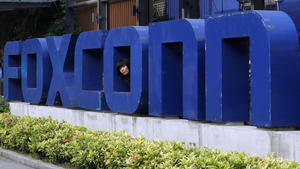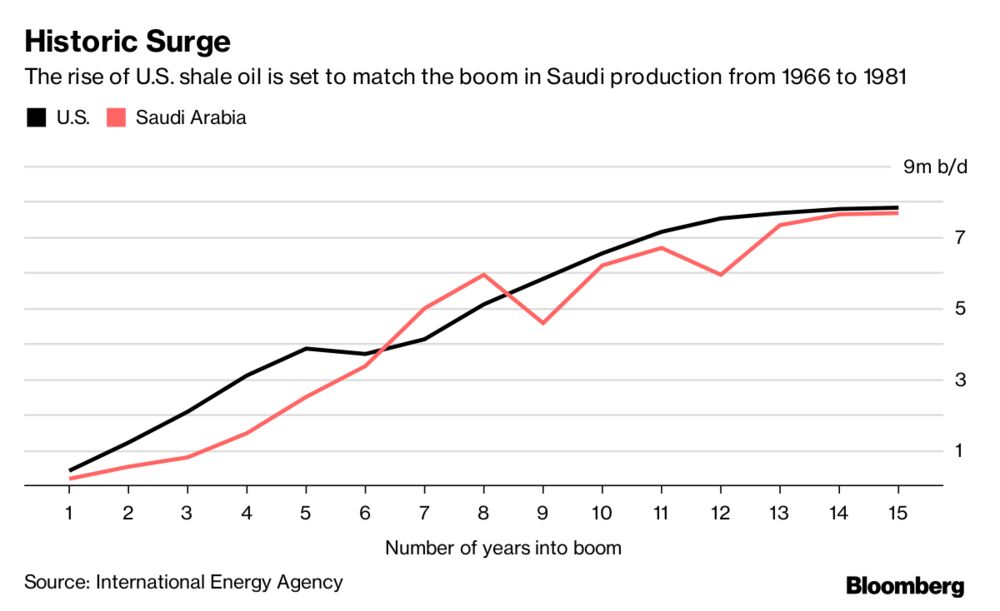Toyota, Mazda plan $1.6 billion U.S. plant, to partner in electric vehicles
Japanese automakers
Toyota Motor Corp. and
Mazda Motor Corp. plan to spend $1.6 billion to build a joint-venture auto manufacturing plant in the U.S. — a move that will create up to 4,000 jobs, both sides said Friday.
The plant will have an annual production capacity of about 300,000 vehicles, and will produce Toyota Corollas for the North American market. Mazda will make cross-over models there that it plans to introduce to that market, the companies said.
Toyota and Mazda are forming a capital alliance and splitting the cost for the plant equally. It is due to begin operations by 2021.
After reassessing the market, Toyota has changed its plan to make Corollas at a plant in Guanajuato, Mexico, now under construction, and instead will produce Tacoma pickups there, Toyota President
Akio Toyoda said.
President
Donald Trump had criticized Toyota for taking auto production and jobs to Mexico. With the investment, both automakers can hope to prove their good American corporate citizenship and appease the Trump administration's concerns about jobs moving overseas.
Toyoda denied that Trump's views influenced his decision.
"We have been reviewing the best production strategy for our business," he told reporters at a Tokyo hotel, after shaking hands with Mazda's president.
Trump welcomed the announcement in a Tweet: "Toyota & Mazda to build a new $1.6B plant here in the U.S.A. and create 4K new American jobs. A great investment in American manufacturing!"

Toyota wouldn't say where the plant would be built, but it's likely to be in the South, near the rest of the company's U.S. factories. Also, since this plant will build the Corolla, it likely will be near Toyota's current Corolla plant in Mississippi to be close to parts supply companies.
The companies also plan to work together on various advanced auto technology, such as electric vehicles, safety features and connected cars, as well as products that they could supply each other, they said.
Toyota plans to acquire 31,928,500 shares of common stock newly issued by Mazda through a third-party allotment, which will amount to a 5.05 percent stake in Mazda, valued at 50 billion yen ($455 million).
Mazda, which makes the Miata roadster, will acquire 50 billion yen worth of Toyota shares, the equivalent of a 0.25 percent stake. The investment deal is expected to be final by October, the companies said.

Toyoda noted the growing competition from newcomers in the auto industry like Google, Apple and Amazon, stressing he was worried about autos turning into commodities. He praised Mazda as a great partner in that effort.
"It has also sparked Toyota's competitive spirit, increasing our sense of not wanting to be bested by Mazda. This is a partnership in which those who are passionate about cars will work together to make ever-better cars," he said.
The companies said their collaboration will respect their mutual independence and equality. Toyota, which makes the Prius hybrid, Camry sedan and Lexus luxury models, already provides hybrid technology to Mazda, which makes compact cars for Toyota at its Mexico plant.
The sheer cost of the plant also makes a partnership logical, as it boosts cost-efficiency and economies of scale. Working together on green and other auto technology also makes sense as the segment becomes increasingly competitive due to concerns about global warming, the environment and safety.
"Given the massive level of competition in the industry, partnerships are no longer a surprise," said Akshay Anand, an executive analyst at Kelley Blue Book.
Politics are another incentive.
"The new presidential administration has made it clear investments in the U.S. are a top priority, and this plant may be another nod to that mindset," Anand said.
Mazda President Masamichi Kogai said he hoped that the partnership will help energize the industry.
Toyota is vying for the spot of No. 1 automaker in global vehicle sales against
Nissan-Renault and Volkswagen AG of Germany, as the industry gradually consolidates.
Japanese rival Nissan Motor Co. is allied with Renault SA of France and Mitsubishi Motors Corp., and is the global leader in electric vehicles. Their alliance led world vehicles sales for the first time in the first half of this year.
The limited tie-up with Mazda marks the latest addition to Toyota's sprawling empire, which includes Japanese truck maker Hino Motors and minicar maker Daihatsu Motor Co. Toyota also is the top shareholder in Fuji Heavy Industries, the maker of Subaru cars.
In the past, Toyota was not overly bullish on electric vehicles, which have a limited cruise range. But recent breakthroughs in batteries allow for longer travel per charge.
Mazda, based in Hiroshima, Japan, used to have a powerful partner in Dearborn-based
Ford Motor Co., which bought 25 percent of Mazda in 1979, and raised it to 33.4 percent in 1996. But Ford began cutting ties in 2008, and has shed its stake in Mazda.
Also Friday, Toyota reported its April-June profit was 613.0 billion yen ($5.6 billion), up 11 percent from 552.4 billion yen a year earlier. Quarterly sales rose 7 percent to 7.05 trillion yen ($64 billion), as vehicle sales improved around the world, including in the U.S., Europe and Japan.
Toyota stuck to its earlier projection for global vehicle sales for the fiscal year, ending in March 2018, at 10.25 million vehicles. It raised its fiscal full year profit forecast to 1.75 trillion yen ($16 billion) from the earlier forecast of 1.5 trillion yen ($14 billion). It earned 1.8 trillion yen in the previous fiscal year.
http://www.chicagotribune.com/business/ct-toyota-mazda-us-plants-20170804-story.html
Japanese automakers Toyota Motor Corp. and Mazda Motor Corp. plan to spend $1.6 billion (U.S.) to build a joint-venture auto manufacturing plant in the U.S. — a move that will create up to 4,000 jobs, both sides said Friday.
The plant will have an annual production capacity of about 300,000 vehicles, and will produce
Toyota Corollas as well as a new Mazda crossover vehicle for the North American market.
Toyota and Mazda are forming a capital alliance and splitting the cost for the plant equally. Toyota wouldn’t say where the plant would be built, but because the new plant will build the Corolla, chances are it will be located near Toyota’s current Corolla plant in Mississippi to be close to parts supply companies. The companies expect the plant to begin operations by 2021.
After reassessing the market, Toyota has changed its plan to make Corollas at a plant in Guanajuato, Mexico, now under construction, and instead will produce Tacoma pickups there, Toyota President Akio Toyoda said.
President Donald Trump had criticized Toyota for taking auto production and jobs to Mexico. With the investment, both automakers can hope to prove their good American corporate citizenship and appease the Trump administration’s concerns about jobs moving overseas.
Toyoda denied that Trump’s views influenced his decision.
“We have been reviewing the best production strategy for our business,” he told reporters at a Tokyo hotel, after shaking hands with Mazda’s president.
Trump welcomed the announcement in a tweet: “Toyota & Mazda to build a new $1.6B plant here in the U.S.A. and create 4K new American jobs. A great investment in American manufacturing!”
Sales of small cars have slumped in the U.S. amid steadily low gas prices. Corolla sales fell 10 per cent through July. But Toyota hopes the market will have shifted by 2021. If not, the plant will have the flexibility to shift to another model, according to spokesman Scott Vazin.
Toyota plans to acquire a 5.05 per cent stake in Mazda, valued at 50 billion yen ($455 million U.S.). Mazda, which makes the Miata roadster, will acquire 50 billion yen worth of Toyota shares, the equivalent of a 0.25 per cent stake. The investment deal is expected to be final by October.
The companies also plan to work together on various advanced auto technology, such as electric vehicles, safety features and connected cars, as well as products that they could supply each other.
In the past, Toyota was not overly bullish on electric vehicles, which have a limited cruise range. But recent breakthroughs in batteries allow for longer travel per charge. Japanese rival Nissan Motor Co. is allied with Renault SA of France and Mitsubishi Motors Corp., and is the global leader in electric vehicles. Their alliance led world vehicles sales for the first time in the first half of this year.
Toyoda also noted the growing competition from newcomers in the auto industry like Google, Apple and Amazon, stressing he was worried about autos turning into commodities. He praised Mazda as a great partner in that effort.
“It has also sparked Toyota’s competitive spirit, increasing our sense of not wanting to be bested by Mazda. This is a partnership in which those who are passionate about cars will work together to make ever-better cars,” he said.
The companies said their collaboration will respect their mutual independence and equality. Toyota, which makes the Prius hybrid, Camry sedan and Lexus luxury models, already provides hybrid technology to Mazda, which makes compact cars for Toyota at its Mexico plant.
The sheer cost of the plant also makes a partnership logical, as it boosts cost-efficiency and economies of scale. Working together on green and other auto technology also makes sense as the segment becomes increasingly competitive due to concerns about global warming, the environment and safety.
“Given the massive level of competition in the industry, partnerships are no longer a surprise,” said Akshay Anand, an executive analyst at Kelley Blue Book.
Politics are another incentive.
“The new presidential administration has made it clear investments in the U.S. are a top priority, and this plant may be another nod to that mindset,” Anand said.
Mazda President Masamichi Kogai said he hoped that the partnership will help energize the industry.
Toyota is vying for the spot of No. 1 automaker in global vehicle sales against Nissan-Renault and Volkswagen AG of Germany, as the industry gradually consolidates.
Japanese rival Nissan Motor Co. is allied with Renault SA of France and Mitsubishi Motors Corp., and is the global leader in electric vehicles. Their alliance led world vehicles sales for the first time in the first half of this year.
The limited tie-up with Mazda marks the latest addition to Toyota’s sprawling empire, which includes Japanese truck maker Hino Motors and minicar maker Daihatsu Motor Co. Toyota also is the top shareholder in Fuji Heavy Industries, the maker of Subaru cars.
In the past, Toyota was not overly bullish on electric vehicles, which have a limited cruise range. But recent breakthroughs in batteries allow for longer travel per charge.
Mazda, based in Hiroshima, Japan, used to have a powerful partner in Dearborn-based Ford Motor Co., which bought 25 per cent of Mazda in 1979, and raised it to 33.4 per cent in 1996. But Ford began cutting ties in 2008, and has shed its stake in Mazda.
Also Friday, Toyota reported its April-June profit was 613.0 billion yen ($5.6 billion U.S.), up 11 per cent from 552.4 billion yen a year earlier. Quarterly sales rose 7 per cent to 7.05 trillion yen ($64 billion U.S.), as vehicle sales improved around the world, including in the U.S., Europe and Japan.
Toyota stuck to its earlier projection for global vehicle sales for the fiscal year, ending in March 2018, at 10.25 million vehicles. It raised its fiscal full year profit forecast to 1.75 trillion yen ($16 billion U.S.) from the earlier forecast of 1.5 trillion yen ($14 billion U.S.). It earned 1.8 trillion yen in the previous fiscal year.
https://www.thestar.com/business/20...l-partner-on-electric-vehicle-technology.html




